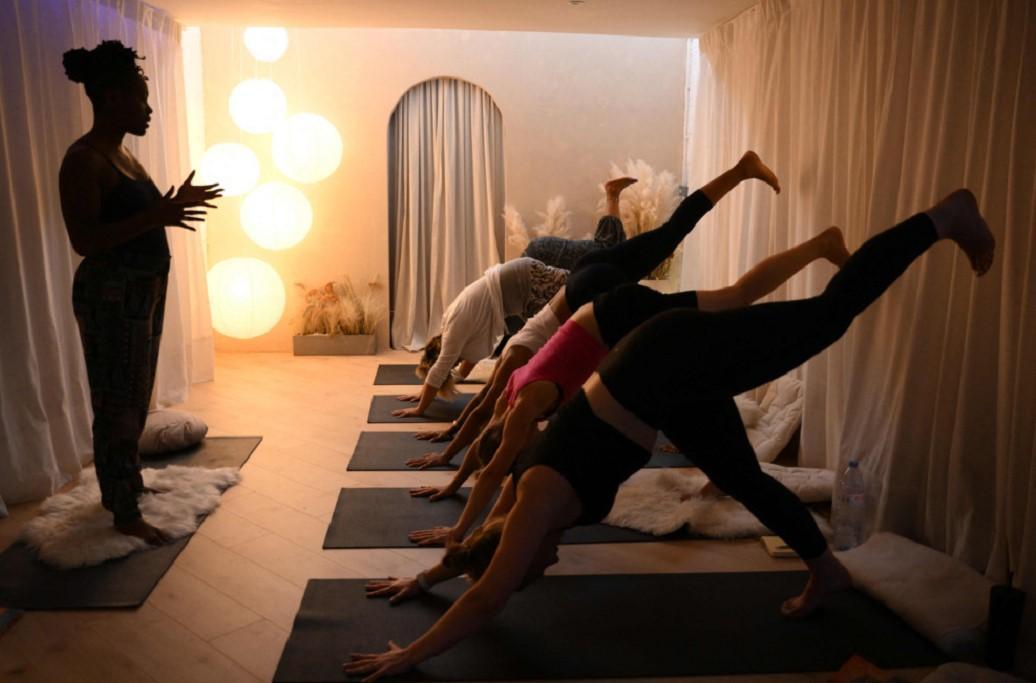UK Yoga ‘warriors’ fighting to diversify booming industry
LONDON

London-based yoga instructor Stacie Graham is on a mission to make the ancient practice more racially and socially diverse, urging her charges to become “warriors for change” in the booming industry.
Yoga, which originates from India, and pilates, a form of exercise focused on postural alignment, are now a $30 billion-a-year industry, according to the Global Wellness Institute.
But this success masks a lack of diversity, which affects the entire fitness sector, argued Graham, who also works as a diversity policy consultant for corporations.
“Here we are in London. If you go to any space where there is a gym or yoga studio, you will likely not see ’London,’ but typically white, female, able bodies - middle class - participating,” she said.
“And my question has been: How is that possible?”
A survey of yoga teachers and practitioners in the U.K. by the medical studies site BMJ Open found that 87 percent were women, and 91 percent white, around 10 percent higher than the national proportion of white people.
Graham has just published book “Yoga as Resistance,” to help industry professionals broaden their clientele.
She also convenes regular workshops with other teachers, practicing yoga and plotting how to diversify the industry.
“You want to be warriors of change, yoga gives us everything we need for that fight,” she tells her charges as they perform the Warrior 2 posture; one leg bent, the other stretched behind, and the arms horizontal, like arrows.
Pam Sagoo, owner of Flow Space Yoga in London’s multicultural Dalston neighborhood, was also at the workshop.
“You just have to look outside the window and look at the people... to know you need appeal to a wider audience,” giving the examples of black, older and LGBT people.
It is a similar situation in the United States, where “there are not many black women in these spaces, and it does not encourage others to enter,” Raquel Horsford Best, a teacher based in Los Angeles, told AFP. Instructors and owners partly blamed access issues, economic factors and the difficulty of keeping studios afloat.
To be profitable, studios often charge high prices. A single session in London costs around £20, potentially pricing many out.
But Graham points to “more subtle” exclusionary factors, such as a performance-oriented atmosphere that discourages those who are less flexible, less slim and older.
As a result, many people who could “really benefit” from yoga, such as those suffering from pandemic-related mental health issues and long COVID, are missing out, she added.
















